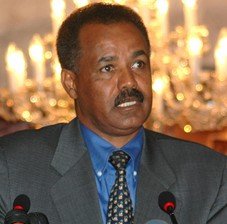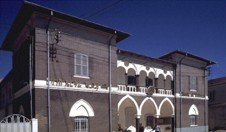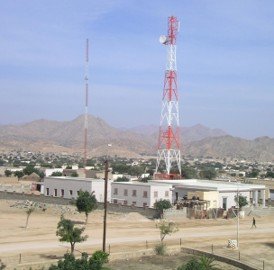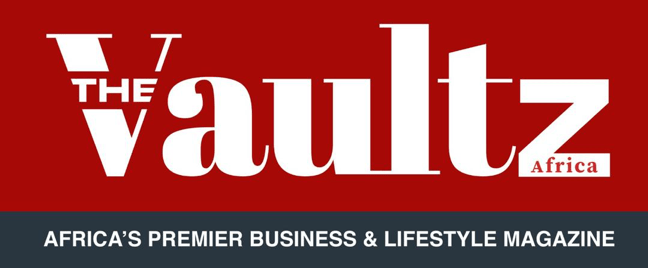
Eritrea, officially the State of Eritrea, is a country in the Horn of Africa. With its capital at Asmara, it is bordered by Sudan in the west, Ethiopia in the south, and Djibouti in the southeast. The northeastern and eastern parts of Eritrea have an extensive coastline along the Red Sea. The nation has a total area of approximately 117,600 km2 (45,406 sq. mi), and includes the Dahlak Archipelago and several of the Hanish Islands, which is located in the Red Sea.
Eritrea was formerly the northernmost province of Ethiopia and is about the size of Indiana. Much of the country is mountainous. Its narrow Red Sea coastal plain is one of the hottest and driest places in Africa. The cooler central highlands have fertile valleys that support agriculture. Eritrea has a mixed Afro-Asiatic population that is divided by religion and language.
Eritrea was part of the first Ethiopian kingdom of Aksum until its decline in the 8th century. It came under the control of the Ottoman Empire in the 16th century, and later of the Egyptians. The Italians captured the coastal areas in 1885, and the Treaty of Uccialli (May 2, 1889) gave Italy sovereignty over part of Eritrea. The Italians named their colony after the Roman name for the Red Sea, Mare Erythraeum, and ruled there until World War II. The British captured Eritrea in 1941 and later administered it as a UN Trust Territory until it became federated with Ethiopia on Sept. 15, 1952. Eritrea was made an Ethiopian province on Nov. 14, 1962. A civil war broke out against the Ethiopian government, led by rebel groups who opposed the union and wanted independence for Eritrea. Fighting continued over the next 32 years until independence birthed.
GOVERNMENT
Eritrea is governed under the transitional constitution of 1993. The executive branch is headed by the president, who is both head of state and head of government; the president is elected by the National Assembly for a five-year term and is eligible for a second term. Administratively, the country is divided into six regions. The state of Eritrea is a one-party state in which national legislative elections have been repeatedly postponed.
An unicameral 150-member National Assembly which comprises 75 Central Committee members of the ruling PFDJ, together with 75 others (representatives elected by the general population, of whom at least 11 must be women, and 15 members representing Eritreans living abroad) form the legislative branch of the democratic government of Eritrea.
The National Assembly establishes the domestic and foreign policies of the government, regulates the State Council’s execution of these policies and approves the country’s budget. The National Assembly elects the president directly.
The judiciary consists of courts at national (Supreme Court), regional (10 provincial courts), and village levels (29 district courts). Special Sharia courts subjugate to the Muslim population, following Islamic Sharia law in family cases.
Following the referendum in April 1993, the country’s first elections since independence from Ethiopia took place in 1994, when the PFDJ (People’s Front for Democracy and Justice) won 284 of the 303 declared results. (At its third congress in February 1994 the EPLF changed its name to The People’s Front for Democracy and Justice (PFDJ).
On May 23rd 1997, a 527-member Constituent Assembly comprised of the 150 members of the provisional National Assembly, the elected representatives of the six Regional Assemblies and representatives from the Diaspora ratified Eritrea’s first internally generated national constitution but has not been fully implemented.

President – The State of Eritrea
The Eritrean Government has a strong commitment to the development of a private sector-led market economy, and has adopted a zero tolerance policy towards corruption.
The announcement of elections in December 2001 was another important milepost in the Eritrean history as an independent nation but was not held. According to Human Rights Watch, the Eritrean government’s human rights record is considered among the worst in the world. The Eritrean government has dismissed these allegations as politically motivated. The compulsory military service requires lengthy, indefinite conscription periods, which some Eritreans leave the country in order to avoid. Since all local media is state- owned, Eritrea is also ranked as having the least press freedom in the global Press Freedom Index.
The current head of state of the State of Eritrea is President Isaias Afwerki. President Isaias Afwerki assumed office since independence from Ethiopia in 1993. President Isaias Afwerki and his cabinet of 16 ministers, regional governors and other officials form the 24-member State Council, the executive branch of the Eritrean government, chaired by the president. The government has been accused of repression and of hindering the development of democracy in the country.
ECONOMY
Many Eritreans work outside the country, and their remittances substantially augment the GDP. Worker remittances from abroad are estimated to account for 32 percent of gross domestic product. The country’s natural resources include gold, potash, zinc, copper, and salt, but they have not yet been exploited. Offshore oil exploration was begun in the mid-1990s. Eritrea has little industry beyond the production of food and beverages, clothing and textiles, and building materials. Imports (machinery, petroleum products, food, and manufactured goods) greatly exceed the value of exports (livestock, sorghum, and textiles).
 The Eritrean economy has undergone extreme changes due to the War of Independence. In 2011, Eritrea’s GDP grew by 8.7 percent making it one of the fastest growing economies in the world. The economy of Eritrea has experienced considerable growth in recent years, indicated by an improvement in gross domestic product (GDP) in October 2012 of 7.5 percent over 2011. A big reason for the recent growth of the Eritrean economy is the commencement of full operations in the gold and silver Bisha mine and the production of cement from the cement factory in Massawa.
The Eritrean economy has undergone extreme changes due to the War of Independence. In 2011, Eritrea’s GDP grew by 8.7 percent making it one of the fastest growing economies in the world. The economy of Eritrea has experienced considerable growth in recent years, indicated by an improvement in gross domestic product (GDP) in October 2012 of 7.5 percent over 2011. A big reason for the recent growth of the Eritrean economy is the commencement of full operations in the gold and silver Bisha mine and the production of cement from the cement factory in Massawa.
Some 80% of the population is involved in farming and herding, although this sector provides less than 10% of the country’s GDP. Eritrea’s agricultural products include sorghum, lentils, vegetables, corn, millet, barley, wheat, legumes, fruits, sesame, linseed, cotton, tobacco, and sisal. Cattle, sheep, goats, and camels are raised, and hides are produced. There is a fishing industry and some pearl fisheries remain in the Dahlak Archipelago. Eritrea’s largely agricultural economy was devastated by its 30-year-long independence war with Ethiopia and hurt again by the strain of the 1998–2000 border war. The country’s main trading partners are Italy, the United States, France, and Germany.
 AGRICULTURE
AGRICULTURE
Agriculture is the main economic activity in Eritrea. 80% of the Eritrean workforce is employed in agriculture. Agriculture makes up about 11 percent of the wider economy’s value. Eritrea has 565,000 hectares (1,396,000 acres) of arable land and permanent crops. Agriculture in Eritrea has experienced extensive improvement over recent years. After the Eritrean War of Independence, agriculture was one of the many sectors that were completely destroyed. Since then, significant investments have been made into the industry—purchases worth millions of dollars of agriculture machinery have been made and hundreds of dams have been built. Eritrea’s main agricultural products include sorghum, millet, barley, wheat, legumes, vegetables, fruits, sesame, linseed, cattle, sheep, goats and camels.
Despite plenty of arable land and significant water resource, Eritrea has at present not only the proportion of the cultivated land that is so small, but farming is practiced on the basis of archaic and traditional methods. In light of these, there is ample room for accelerated agricultural development if more investment is channelled to the sector. Large productivity gains could be achieved from a relatively modest investment in new and improved methods.
Using modern cultivation, fertilization, plant protection and water conservation techniques, large quantities of food crops, exports as raw materials for industrial enterprises can be produced. The development of irrigated agriculture in the lowland river basins is highly promising. Also, Eritrea is endowed with suitable animal husbandry and livestock development. Though the current development of this sub-sector is so low, if modern animal husbandry, improved animal feed, interbreeding efforts, veterinary and vaccination services are introduced, high investment returns can be obtained.
In this respect, Eritrea offers three major areas in agriculture: South Western Lowlands, Eastern Lowlands and Southern Highlands suitable for crops, horticulture, dairy and forest products, livestock breeding and fattening, and poultry.
The most favourable investment opportunities include fresh and processed dairy and meat products, live animal export, hides, skin and leather export, horticulture and cash crops such as coffee, cotton, flowers, high-value nuts, sesame, gums, resins, lentils, etc.
ANIMAL HUSBANDRY
Sheep, goats, cattle (especially zebu), and camels make up the majority of Eritrea’s livestock. In 2001, Eritrea had 2,100,000
sheep, 1,700,000 goats, 1,950,000 herds of cattle, 75,000 camels, and 1.4 million chickens. Total meat production that year was 30,900 tons; cow’s milk, 39,200 tons; and eggs, 2,000 tons. The government is emphasizing development of agriculture and animal husbandry in order to decrease the reliance on international relief, caused by war.
 INDUSTRY AND MANUFACTURING
INDUSTRY AND MANUFACTURING
By the end of the War of Independence, all industrial production had stopped due to the Ethiopians’ nationalizing and breaking apart of Eritrea’s largest factories, as well as the destruction of infrastructure by the weapons of the then Ethiopian government. The remaining plants were generally inefficient, and most of these industries required significant investment to achieve productivity. Since then, there has been a gradual growth in industry. The Manufactured items as of 2002 included beverages, processed foods, tobacco, leather, textiles, metal products, chemicals, printing, non- metallic minerals, construction materials, salt, paper, and matches. The government sought privatization of these industries, and issued incentives such as exemptions from income tax, preferential treatment in allocation of foreign exchange for imports, and provisions for remittance of foreign exchange abroad. In 2002, there were approximately 2,000 manufacturing companies operating in the country.
The oil industry has potential, as major oil deposits are believed to lie under the Red Sea. In 2001, a United States firm CMS Energy entered into an exploration agreement with Eritrea for exploration in the Dismin Block in north-eastern Eritrea. Due to high operating costs, the country’s sole oil refinery, at Assab, was closed in 1997. It had a crude refining capacity of 18,000 barrels per day (2,900 m3/d).
The construction industry is growing, as projects range from the construction and expansion of power plants; road, airport, and dam construction; upgrading sea ports; and the construction of schools and hospitals.
In 2005, industry had a 26.3% share of the GDP and since 2011; it has grown to 34%. Recent industries include food processing, beverages, clothing and textiles, salt, cement, and commercial ship repair.
MINING AND MINERALS
Eritrea’s substantial mineral deposits are largely unexplored. According to the Eritrean government, artisanal mining in 1998 collected 573.4 kilograms of gold; however, the number of gold reserves is unknown. International observers also have noted Eritrea’s excellent potential for quarrying ornamental marble and granite. As of 2001, some 10 mining companies had obtained licenses to prospect for different minerals in Eritrea. The government of Eritrea reportedly is in the process of conducting a geological survey for use by potential investors in the mining sector. The presence of hundreds of thousands of land mines in Eritrea, particularly along the border with Ethiopia, presents a serious impediment to future development of the mining sector.
Nevsun Resources completed its Bisha mining project in early 2011. Estimated production was 350,000 ounces of gold per year until the gold runs out, at which point the mine will produce copper and zinc.
 SERVICES
SERVICES
In 2011, services accounted for 55 percent of gross domestic product. Financial services, the bulk of the services sector, are principally rendered by the National Bank of Eritrea (the nation’s central bank), the Commercial Bank of Eritrea, the Housing and Commerce Bank of Eritrea, the Agricultural and Industrial Bank of Eritrea, the Eritrean Investment and Development Bank, and the National Insurance Corporation of Eritrea.
FINANCIAL SYSTEM
The Bank of Eritrea is the central bank of Eritrea. The country’s formal financial sector is very small and mainly state-owned, providing only rudimentary financial services to the economy. In addition to the Central Bank and two commercial banks, the only financial institutions are the Eritrean Development and Investment Bank (EDIB), the National Insurance Corporation of Eritrea (NICE), and the Himbol Exchange and Financial Service which acts as an auxiliary providing money transfer and foreign exchange services. The Central Bank coordinates monetary and exchange rate policies only in close consultation with the government.

BANKING SECTOR
Modern banking in Eritrea started with the arrival of the Italian colonizers. However, from 1974 on (due to the nationalization decided by the Ethiopian Government of Mengistu Haile Mariam), the banking sector became a government monopoly. This situation continued after Eritrea achieved its independence.
At present there are three commercial banks in operation in Eritrea – The Commercial Bank, The Housing and Commercial Bank, and the Eritrean Investment and Development Bank. All banks with the exception of the Housing and Commercial Bank are under state ownership, while the Housing and Commercial Bank is owned by the ruling party, the PFDJ. The Commercial Bank of Eritrea is the largest commercial bank in the country. It loans mainly to larger state-owned and private manufacturing firms. The second commercial bank, the Housing and Commerce Bank of Eritrea (HCBE), is a relatively small institution and the only one not to be owned by the government. Its main assets consist of loans for infrastructure and construction activities. All banks are majority-owned by the government and no foreign financial institutions operate in the country.
While the Eritrean government launched microfinance programs in 2005 to extend financial services to the poor, there is still great potential for further development. The prospects for developing mobile banking services are limited, as Eritrea has one of the lowest mobile phone penetration rates on the continent: according to the latest data available only 4 out of 100 adults holds a mobile phone.
Eritrea’s fixed income market is in its very early phase of development and has, to date, very limited activity and sophistication. There is no auction of government securities, short-term treasury bills are issued and sold at fix price by the Central Bank, and there is no corporate bond issuance. There is no secondary market for government securities and no financial intermediaries, such as brokers or primary dealers, operate in the country. As of March 2013, Eritrea received no sovereign rating from any of the three major credit rating agencies.
TELECOMMUNICATION SECTOR
Eritrea’s telecom sector operates under a state-owned monopoly for fixed and mobile services. Partly as a result of such restrictions on competition, the country has the least developed telecommunications market in Africa. Mobile penetration as on mid-2016 was only about 7.4%, while fixed-line internet use barely registers. This is exacerbated by the very low use of computers, with only about 2% of households having a computer, and most of these being in the capital, Asmara. Only the Internet Service Provider (ISP) sector is open to competition.

Growth in the mobile and internet sector is showing some promise as the national telco, the Eritrean Telecommunication Services Corporation (EriTel), continues to roll out a Third Generation (3G) mobile network. However, considerable investment in telecom infrastructure is required to improve the availability of services. The government in May 2016 announced a work program to do exactly that, specifically aimed at extending services to remote areas, improving the quality of services, and ensuring that more telecoms infrastructure is supported by solar power to compensate for the poor state of the electricity network.
Additional foreign investment in telecom infrastructure, as well as introduction of more competition, would help transform what remains a virtually untapped market.
TOURISM SECTOR
Eritrea is a country blessed with a warm, hospitable climate that is rich in cultural heritage, and great natural assets; the tourism sector holds enormous potential to reduce poverty and enhance economic growth. Eritrea has long been a hidden gem for travellers looking for a rich natural heritage and spectacular nature experiences. The country’s magnificent archaeological and geographical features would be the envy of any country trying to attract visitors. Pristine beaches and natural wildlife areas combined with archaeological, historical and religious sites makes it ideal for adventurous visitors seeking experiences off the beaten track. Although the country has started to be noticed – partly as a result of government marketing efforts – there is still a long way to go before the ecological and cultural sites of the country will attract any large crowds of visitors.
 However, the country must remain committed to the continued development of basic infrastructure (e.g. roads and airport facilities). Furthermore, the experience of countries that have developed successful tourism sectors (e.g. the Association of Southeast Asian Nations [ASEAN]) can offer important lessons for Eritrea, particularly in terms of improving connectivity, visa facilitation, and services. While tourism can promote growth and development, Eritrea must also make efforts to minimize or avoid potential adverse effects (e.g. on environment, cultural heritage, or local communities).
However, the country must remain committed to the continued development of basic infrastructure (e.g. roads and airport facilities). Furthermore, the experience of countries that have developed successful tourism sectors (e.g. the Association of Southeast Asian Nations [ASEAN]) can offer important lessons for Eritrea, particularly in terms of improving connectivity, visa facilitation, and services. While tourism can promote growth and development, Eritrea must also make efforts to minimize or avoid potential adverse effects (e.g. on environment, cultural heritage, or local communities).
The Eritrean government’s ambitious development plan for the country´s tourism market from the year 2000 to the year 2020 has yet to reap any significant rewards. The Eritrean travel and tourism market has been described as a table that needs to be lifted simultaneously from all sides to be able to prosper; i.e. all the areas of the industry, including infrastructure, political stability and government efforts need to all be in place for any real change to occur.
CULTURAL AND SOCIAL ACTIVITIES
The culture of Eritrea is the collective cultural heritage of the various populations native to Eritrea. It shares historic commonalities with the traditions of Ethiopia, Somalia, Djibouti and Sudan. The local culture consists of various, and often quite similar, traditions practiced by the nation’s many Cushitic and Ethiopian Semitic-speaking Afro-Asiatic ethnic groups, in addition to those practiced by the area’s Nilotic minorities.
Eritrea has nine ethnic groups, each of which have their own different styles of music and accompanying dances. A common instrument used by many of the communities is the drum. Amongst the Tigray-Tigrinya, the best known traditional musical genre is called guaila.
Eritrean cuisine is a reflection of the country’s history. The injerra is commonly eaten in the rural areas. It is pancake-like bread that is eaten together with a sauce called tsebhi or wat. The sauce may be of a hot and spicy meat variety, or vegetable based. In the urban centers one finds the strong influence of Italian cuisine, and pasta is served in all restaurants. The lowland groups have a different food tradition than the highlands with the staple food being porridge (asida in Arabic) made of sorghum.
Coffee is also a special delicacy in Eritrea and to be asked to take coffee is a symbol of hospitality and the way that Eritreans honour their guests. It takes up to an hour for the coffee to be prepared in a coffee ceremony and it is standard practice that you must have three cups and compliment the taste before leaving.
It is estimated that around 61% of the population of Eritrea is Christian, mostly belonging to the Oriental Orthodox tradition of the Eritrean Orthodox Tewahedo Church, and around 50% is Sunni Muslim or Sufi. The rest of the population practice traditional Indigenous religions, and Roman Catholicism, while others include Protestants, Seventh-day Adventists, Jehovah’s Witnesses, and Baha’is. Generally, the eastern and western lowlands are predominantly Muslim while the highlands are predominantly Christian.


 AGRICULTURE
AGRICULTURE INDUSTRY AND MANUFACTURING
INDUSTRY AND MANUFACTURING SERVICES
SERVICES